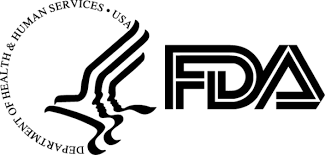 Safety/Quality
Safety/Quality
Study: Post-laparotomy incisional negative pressure wound therapy fails to reduce infection risk

Editor's Note A large international clinical trial found that incisional negative pressure wound therapy (iNPWT) does not reduce surgical site infections (SSIs) following emergency laparotomy. The SUNRRISE trial, conducted across 34 hospitals in the UK and Australia and published January 27 in Jama Network, randomized 821 patients to receive either…
FDA announces multiple Class 1 recalls

Editor's Note The US Food and Drug Administration (FDA) designated Class 1 Recalls—the most severe category indicating serious risk of injury or death—for multiple devices over the past few days, including pressure monitoring systems, emergency resuscitators, fluid delivery sets, extracorporeal blood circuits, endoscope accessories, infusion pumps, and glucose/Ketone meters. These…
Three strategies for demystifying the ASC supply chain puzzle

Ensuring safe, quality care requires precise alignment among inventory levels, delivery schedules, storage solutions, and every other element of the supply chain. A single missing piece of this puzzle—say, a delayed shipment or a storage issue—can disrupt the entire picture. Making the pieces fit can be difficult for any healthcare…
E-learning builds surgical tech talent pool for small, rural hospitals

CEO Karen Franco, MBA, spent years struggling to fill surgical technologist (ST) positions at Pacific Surgery Center in Poulsbo, Washington, due to a lack of viable training options. Nearly 1,400 miles away, Deb Braly, RN, a nurse educator in the surgery department of San Luis Valley Regional Medical Center in…
Learning to lead: Rising perioperative stars reflect on challenges, growth

The idea that “you can take the nurse out of the OR, but you can’t take the OR out of the nurse” is not new. And yet, a recent panel discussion among emerging nurse leaders indicates this old adage rings truer today than ever. Speaking at the 2024 OR Manager…
Healing healthcare: How clinician incentives can help get from volume to value

Takeaways • Although the central tenets of value-based healthcare have not changed, in many cases implementation has been reduced to little more than reducing costs, to the detriment of clinicians and patients. • The right incentives, such as recognition and work support, can effectively inspire clinicians to deliver high value…
Solving the supply chain equation takes shared perspective, ingenuity

Takeaways • Interdepartmental collaboration and standardized communication are essential to quickly identifying and addressing supply chain challenges. • Just-in-time inventory strategies have gained traction since the pandemic. Successful strategies involve leveraging data, rethinking preference card management, and shifting to a demand-planning model. • Resiliency is essential to cope with the…
Study: ERAS protocol reduces opioid use after cardiac surgery

Editor's Note Implementing a multimodal analgesia-based enhanced recovery after surgery (ERAS) protocol significantly reduced both intraoperative opioid administration and postoperative opioid prescriptions in cardiac surgery patients, according to a January 5 report in Anesthesiology News. The findings were presented at the 2024 International Anesthesia Research Society meeting by Montefiore-Einstein Center…
Study: Prehabilitation reduces surgical complications, speeds recovery

Editor's Note Patients who engage in prehabilitation—exercise, diet changes, and social support—before surgery significantly reduce their risk of complications, shorten hospital stays, and improve recovery, according to a new evidence review in The BMJ. As reported January 24 by HealthDay, the analysis of 186 clinical trials involving more than 15,500…
Commentary: Studies show how surgeon decisions follow the money

Editor's Note Financial incentives can shape surgeons’ decision-making, but their effectiveness depends on the structure of the payment model. This is the central message of a January 26 article in Forbes reporting on two studies: one linking a sharp increase in hernia cases to a simple Medicare coding change, and…

 Free Daily News
Free Daily News